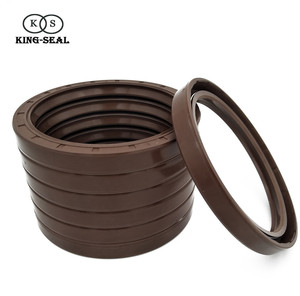Top categories

Prefabricated Buildings

Countertops, Vanity Tops & Table Tops

Building & Industrial Glass

Mosaics

Metal Building Materials

Multifunctional Materials

Ladders & Scaffoldings

Mouldings

Corner Guards

Decorative Films

Formwork

Other Construction & Real Estate

Soundproofing Materials

Timber

Waterproofing Materials

Building Boards
About products and suppliers
Understanding Fire Seals: A Comprehensive Guide
Fire seals play a crucial role in enhancing the safety of buildings by preventing the spread of fire and smoke. These components are essential in maintaining the integrity of fire-resistant areas, and their selection should be based on a thorough understanding of their types, applications, and features.
Types of Fire Seals
Fire door seals and intumescent seals for fire doors are among the most common types of fire seals. They expand when exposed to heat, sealing off gaps to prevent the passage of fire and smoke. Smoke seals for doors, including cold smoke seals, are designed to block out smoke, which is vital since smoke inhalation can be as dangerous as the fire itself. For equipment, fire extinguisher tamper seals and extinguisher seals indicate whether safety devices have been compromised.
Applications and Features
Fire seals are not limited to doors; they are also used in various construction joints and openings. Fire rated sealant and fire barrier sealant are used to fill gaps and joints to prevent the spread of fire and smoke through a building. The effectiveness of these seals is evident in their resistance to high temperatures and their ability to maintain structural integrity during a fire.
Materials like EPDM, PP, and graphite are commonly used in the manufacturing of fire seals due to their durability and fire-resistant properties. These materials ensure that the seals perform effectively when needed.
Advantages of Fire Seals
The primary advantage of using fire seals, such as fireproof seal and fire resistant sealant, is the increased safety they provide. By compartmentalizing fire and smoke, they allow for safe evacuation and reduce damage to property. Fire stopping sealant and fire and smoke seals for doors are integral to a building's passive fire protection system, offering peace of mind that safety measures are in place.
When choosing fire seals, it's essential to consider the specific needs of your project. Whether it's for a commercial building or a residential property, the right fire seal can make a significant difference in safety and compliance with fire safety regulations.
Selecting the Right Fire Seal
Selecting the appropriate fire seal requires an understanding of the building's design and the specific fire safety requirements it must meet. It's important to consider the seal's compatibility with the materials it will be in contact with, as well as the environmental conditions it will be exposed to.
In conclusion, fire seals are a vital component in the fire safety strategy of any building. By understanding the different types, applications, and advantages, you can make an informed decision on the right fire seals for your needs. Remember to consult with fire safety professionals to ensure that your choice of fire seals meets the necessary safety standards and regulations.

























 浙公网安备 33010002000092号
浙公网安备 33010002000092号 浙B2-20120091-4
浙B2-20120091-4